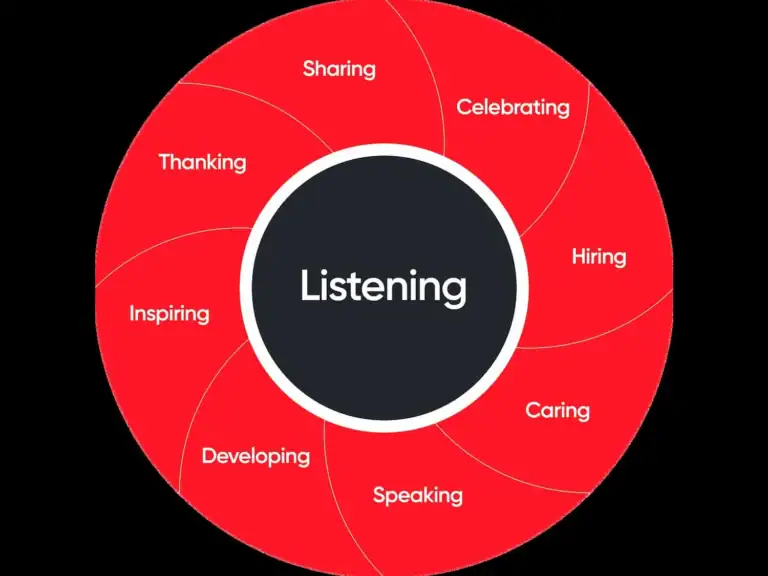
How to Lay Off Employees with Care and Compassion

Claire Hastwell

Laurie Minott
If you were to ask managers around the world what part of their jobs they disliked the most, there’s a good chance you’d find laying off employees at the top of the list.
Unfortunately, the reality is that even among the best companies, layoffs cannot be avoided in extraordinary times.
However, the Best Workplaces find ways to maintain trust, even when tough economic times call for layoffs. Our research has shown that companies who build trust during difficult times experience faster recovery to their business and to their brand.
What do they do when faced with the prospect of letting people go?
We looked at our data from the Great Recession to see how leading organizations navigated those tumultuous days. And talking with leaders at Best Workplaces™ navigating through this more current crisis, we found a number of common practices:
1. Promote a culture of listening
When leaders and managers focus their time listening to their people, they are better equipped to have tough conversations when layoffs are necessary.
When you really know your employees as people, rather than merely workers, you know what they value and what style of communication resonates best. You can have the conversation knowing how to best respond to their needs.
For example:
- Longtime employees might need reassurance that the layoff wasn’t due to poor performance
- Caregivers might be more focused on what this means for their family
Everyone reacts differently during stressful situations, but knowing who they are and what is important to them can help you be more sensitive and focused, making a difficult conversation more compassionate.
2. Support your managers
For many managers, laying off an employee is the most difficult part of their role.
Support your managers by providing tools, resources, and support with delivering difficult news so they feel more prepared for these conversations.
Some ways you can support your people managers:
- Meet with managers to acknowledge the challenges, the importance of their role, and describe the company’s approach for supporting employees – linking it to company values.
- Call on experts in grief or resiliency training.
- Create a forum (whether an online chat channel or recurring meeting) for leaders and HR to talk about employee reactions and how to answer difficult questions that come up.
3. Communicate transparently and often
Open and honest communication will help employees understand how the crisis is impacting the company and can create a greater understanding of the difficult decisions the company is facing.
While you don’t want to elicit fear or panic, employees want to understand how the company is faring in these tough economic times. People will be more resilient if they understand how outside forces are impacting their job, their profession, their industry, and their company.
When layoffs are announced, leverage all levels of leadership in the discussion, with the goal of consistent, clear, and effective two-way communication. For example, the CEO can host a town hall for the entire company. Then, General Managers can host smaller sessions with business units and managers can lead sessions with their teams.
Many leaders at Best Workplaces are sending weekly videos recorded from their living rooms on their smartphones. These messages are imperfect but vital to sharing information timely and sincerely. Employees value this authenticity.
This sends a much stronger message of care, openness, and authenticity – things we all need and hold onto in times of insecurity.
Want to get recognized for your great culture?
Find out how you can power your people analytics function and show the world you’re a great workplace with our Great Place to Work-Certification™ process.
4. Offer internal or external support to help affected employees
How employers handle layoffs tells a lasting story of an organization’s culture. For this reason, we recommend going above and beyond what is expected with support and care for employees.
The best companies provide:
- Time for employees to process, gather their belongings, and say goodbyes
- Severance and extended health benefits
- Transition counseling, employee assistance, or resume preparation
- Assistance with programs and services such as unemployment benefits and job retraining
- Introductions to, or job listings from, other local employers who may be hiring
- Written and verbal references to support employees’ job-seeking efforts
5. Engage remaining employees
Following layoffs, remaining employees often feel “survivors’ guilt.” After all, the employees who left were their colleagues and friends.
Left unaddressed, such feelings of guilt can sap morale and hang over your company culture. Here are a few examples of ways you can combat this:
- Engage with employees often to let them know how the organization is helping those laid off and make them aware whenever placements (internal or external) are successful so they can see the extension of care.
- Create space in meetings for employees to talk about how they are coping.
- Since remaining employees may be putting in long hours and picking up extra work, consider increasing support to ensure employees have the resources they need.
- Remind them about external resources such as EAP and employee resource groups, so they can share and process their experiences.
- In one company, the HR team repurposed their time to make personal calls to every employee to see how they were doing and what they needed for support.
6. Follow up with laid-off employees
An employee’s relationship with a company shouldn’t end when they are laid off.
Your Human Resources team can reach out to employees following their departure to:
- Check-in on their wellbeing
- Provide updates of any job connections made with other employers
- Remind them of resources that continue to be available
- Ensure they know that they can be rehired in the future to replace attrition or address new priorities.
Making the decision to lay off employees is never easy, but following these key steps will ensure that you handle the process with care, compassion, and dignity.

What Makes Napco a Great Place To Work®? It Starts with Family Spirit and Ends with Impact
What Makes Napco a Great Place To Work®? It Starts with Family Spirit and Ends with Impact About Napco National Napco National has been part of the Saudi industrial landscape since 1956,

9 High-Trust Leadership Behaviors That Build Great Workplaces
Caring, Celebrating, Developing, Employee Experience, Hiring, High-trust leadership, Inspiring, Leadership & Management, Listening, Managerial Communication, Sharing, Speaking, Thanking Every employee should take these behaviors to heart whether or not they are people leaders. I often get asked

The Evolution of Workplace Culture: Why It Matters More Than Ever in 2025
One universal workplace experience is the emotional imprint left by an organization—its energy, trust, and sense of belonging. Although experts may agree on what constitutes

How Purunity Embeds Goodness into Work and Culture
People go where there is pride in the work they do. At Purunity, this sense of pride stems from our core mission: driving innovative and

Powerful Strategies to Cultivate DEI in Omani Workplaces
DEI is not only a buzzword! Developing a diverse, equitable, and inclusive work environment shows that leaders care about their employees, appreciate, and respect their

4 Strategies to Promote Resilience in UAE Workplaces
Cultivating resilience in the workplace is the key to empowering employees and boosting their confidence. It is important for both employees and their leaders. Resilience
Get Insights In Your Inbox
Access the latest news, research, and best practices to inspire your great workplace journey.
